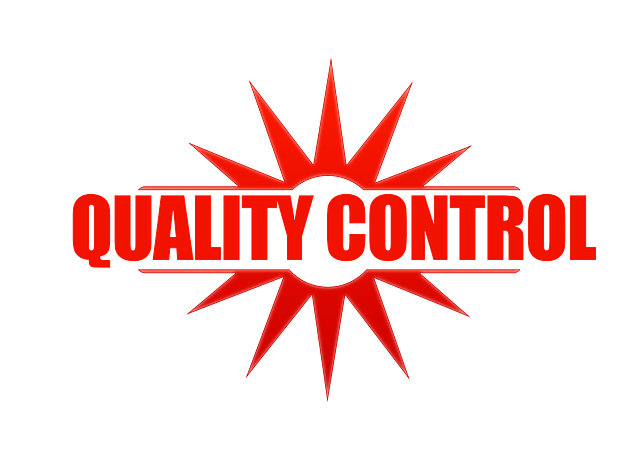Foundation inspections are crucial for maintaining structural integrity and stability in buildings. This comprehensive process involves specialized tools and techniques to evaluate below-grade components like foundations, basements, and underground elements. Regular inspections enable early problem detection, predict future issues, prevent costly repairs, and ensure the safety and longevity of structures. Advanced technologies like drones, remote sensing, digital modeling, and non-invasive testing methods enhance inspection accuracy and efficiency. Interpretation of results guides informed decisions for repairs or support measures. Proactive foundation care through regular inspections, addressing moisture problems, and reinforcing older structures fortifies durability, preventing structural damage and costly repairs. Real-world success stories highlight the importance of professional foundation repair services in maintaining structural integrity.
Guaranteed Foundation Stability is paramount in ensuring the longevity and safety of any structure. This comprehensive guide delves into the essentials of foundation inspection, equipping readers with a deep understanding of common issues and modern assessment technologies. From identifying structural defects to exploring non-invasive testing methods, we demystify key aspects of foundation integrity. Learn effective strategies for enhancement and maintenance, supported by real-world case studies, empowering you to safeguard your property’s foundational health through informed Foundation Inspection practices.
Understanding Foundation Inspection: Unveiling the Basics

Foundation inspections are a critical aspect of ensuring structural integrity and stability for any building. It’s a comprehensive evaluation process that involves meticulous examination of the below-grade components supporting the structure, including the foundation itself, basement, and any other underground elements. Skilled inspectors use various tools and techniques to assess the condition of these areas, identifying potential issues such as cracks, settlement, water damage, or structural defects.
Regular foundation inspections are essential for proactive maintenance and early problem detection. They help in predicting potential future problems, preventing costly repairs, and ensuring the safety and longevity of the building. By understanding the intricacies of foundation inspection, homeowners and property managers can take informed decisions regarding their property’s maintenance and investment.
Identifying Common Foundation Issues: A Comprehensive Guide

Foundation instability is a common issue that can lead to significant structural problems over time. Identifying potential issues early through comprehensive foundation inspections is crucial for maintaining a stable and safe home. Common foundation problems include settlement cracks, bowing walls, uneven floors, and stuck doors or windows. These symptoms may indicate various underlying causes, such as poor soil conditions, inadequate foundation design, or ground water fluctuations.
During a thorough foundation inspection, professionals carefully assess the overall structure, looking for signs of movement, cracking, or damage. They also consider factors like the age of the home, local geological data, and historical rainfall patterns to pinpoint potential risks. Regular inspections enable homeowners to address issues promptly, preventing further deterioration and costly repairs down the line.
The Role of Technology in Modern Foundation Stability Assessment

In today’s digital era, technology has revolutionized many aspects of construction and infrastructure maintenance, and foundation stability assessment is no exception. Advanced tools and techniques have significantly enhanced the way we inspect and evaluate the integrity of foundations. One notable development is the integration of drones and remote sensing technologies for aerial foundation inspections. These methods provide a bird’s-eye view of the structure, allowing professionals to identify cracks, heaves, or other signs of instability that might be missed during traditional on-site examinations.
Additionally, digital modeling and simulation software enable engineers to create detailed 3D models of foundations, analyzing structural behavior and potential failure points. This predictive approach is invaluable in identifying vulnerabilities before they become critical issues. With real-time data analysis and advanced algorithms, technology plays a pivotal role in ensuring the longevity and stability of foundations, ultimately contributing to safer and more robust construction projects.
Non-Invasive Testing Methods for Assessing Foundation Integrity

Non-invasive testing methods have revolutionized foundation inspection, offering a safe and effective way to assess structural integrity without causing any damage or disruption. Techniques like Ground Penetrating Radar (GPR) and seismic testing are game-changers in the field. GPR uses radar pulses to create detailed images of the subsurface, revealing potential cracks, voids, or anomalies within the foundation. This method is particularly useful for assessing older structures where traditional inspection may be challenging.
Seismic testing, on the other hand, simulates real-world ground motion to evaluate how a structure responds. By measuring the foundation’s vibration and displacement, engineers can identify weaknesses or areas of concern. These non-invasive approaches provide valuable insights into the foundation’s health, ensuring stability and longevity without the need for invasive excavations.
Interpreting Inspection Results: Deciphering the Data

Interpretation of foundation inspection results is a crucial step in understanding your structure’s stability. The data gathered during these assessments provides valuable insights into potential issues or areas that require reinforcement. By carefully examining the findings, professionals can identify structural weaknesses, cracks, or anomalies that may impact the overall integrity of the foundation. This process involves deciphering complex data, including measurements, photographs, and descriptions, to create a comprehensive report.
The report should clearly outline any discrepancies or deviations from expected standards, offering a detailed analysis of each observation. This allows homeowners, builders, and engineers to make informed decisions about necessary repairs or additional support measures. Effective interpretation ensures that any issues are addressed promptly, enhancing the foundation’s stability and longevity, thereby mitigating potential risks and costs associated with neglected structural problems.
Strategies for Enhancing and Maintaining Foundation Stability

Maintaining a stable foundation is paramount for any structure’s longevity. To ensure this, regular and thorough foundation inspection should be prioritized. This involves assessing the state of the foundation walls, floor, and any visible cracks or signs of settlement. Early detection of these issues allows for prompt addressing before they escalate into major problems.
There are several strategies to enhance and maintain foundation stability. One is to address moisture issues, as high humidity can lead to soil erosion and contribute to foundation movement. Implementing effective drainage systems around the property and using waterproof membranes can help mitigate this. Regularly checking and repairing any leaks in plumbing or roofing is also crucial. Additionally, underpinning or reinforcing existing foundations with steel beams or mesh can provide extra support, especially in older structures.
Case Studies: Real-World Examples of Foundation Repair Success

In the realm of foundation stability, real-world examples serve as compelling case studies, demonstrating the effectiveness of professional foundation repair services. These success stories often begin with a thorough foundation inspection, where experts assess the structural integrity and identify potential issues like settlement, cracks, or shifting. For instance, in a recent project, a historic home in a bustling metropolis exhibited signs of uneven settling, threatening its structural soundness. Through meticulous inspection, the team identified the root cause: inadequate soil support due to changing moisture levels.
The solution involved a comprehensive plan that included underpinning and soil stabilization techniques. By reinforcing the foundation, the structure was secured, preventing further damage. This case study highlights how proactive foundation inspection and timely intervention can preserve the integrity of buildings, ensuring their longevity. Similar scenarios across diverse landscapes underscore the importance of seeking expert advice for optimal foundation stability.
